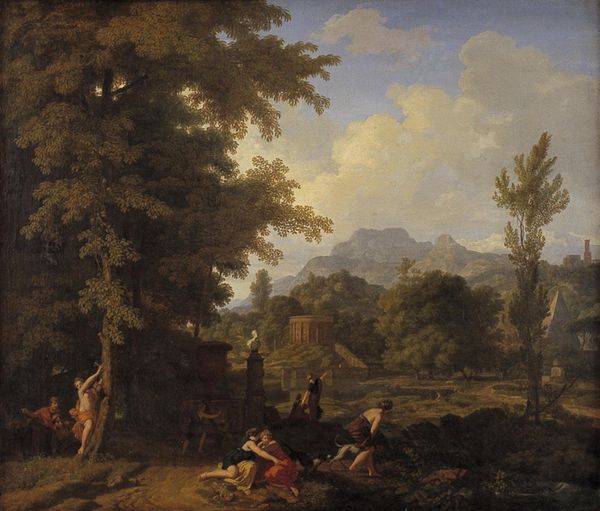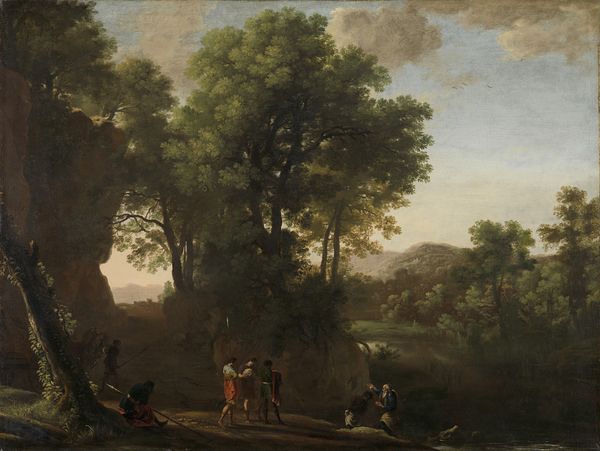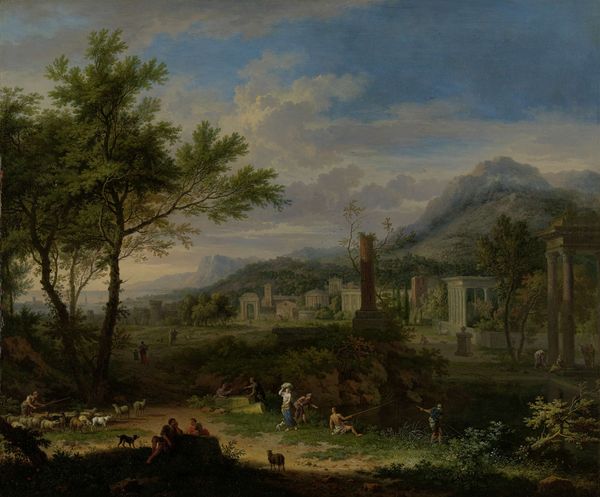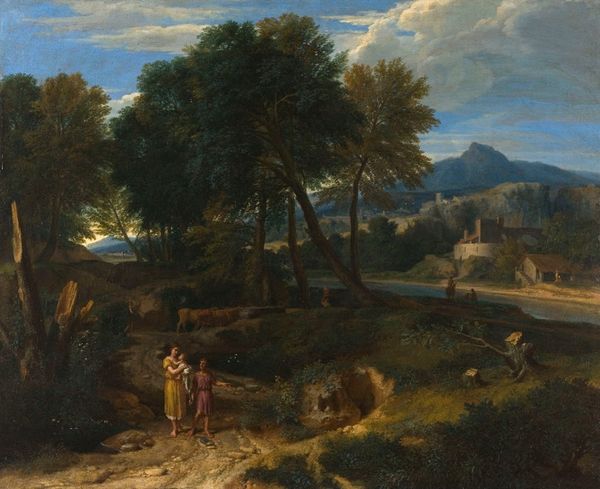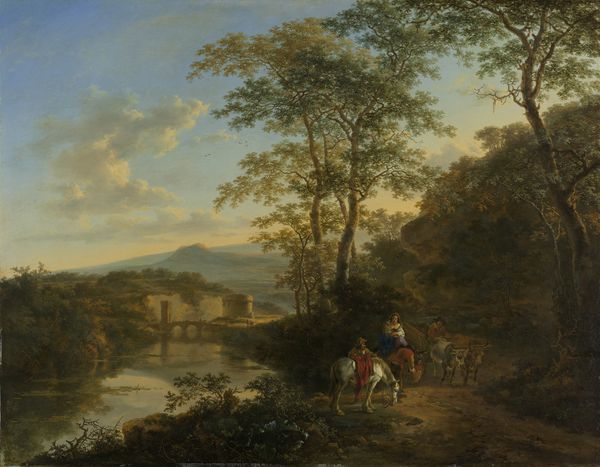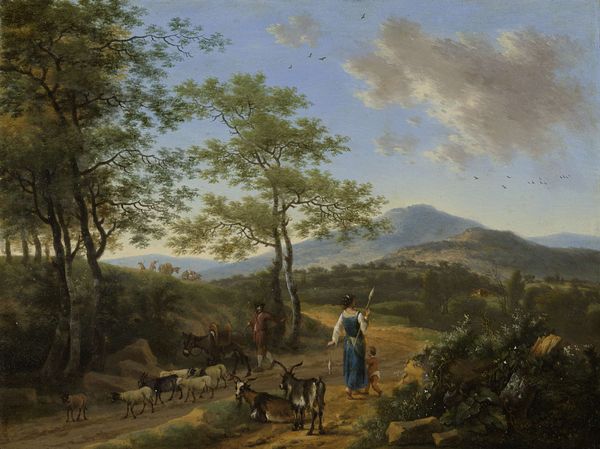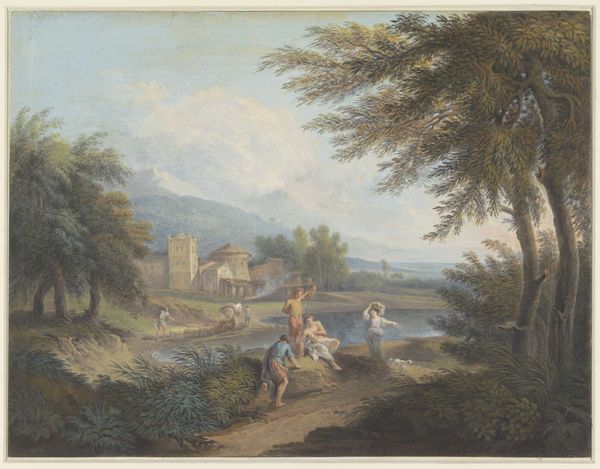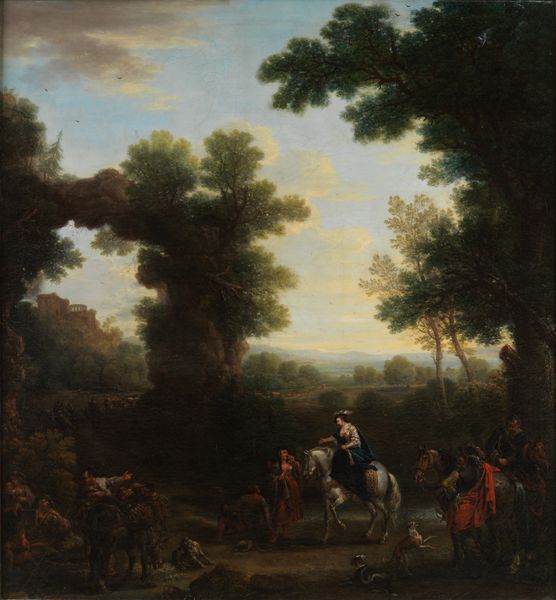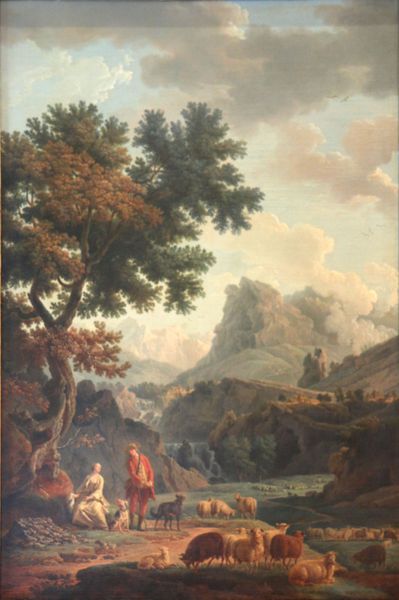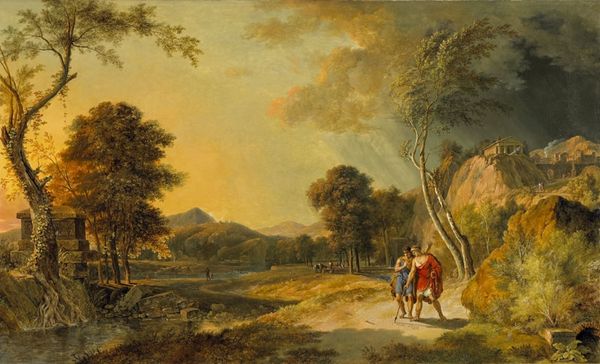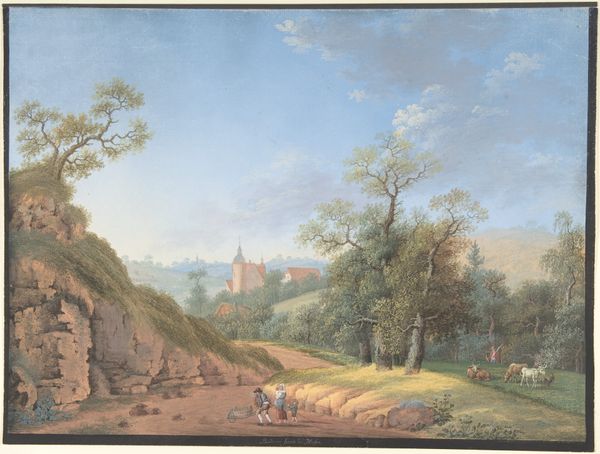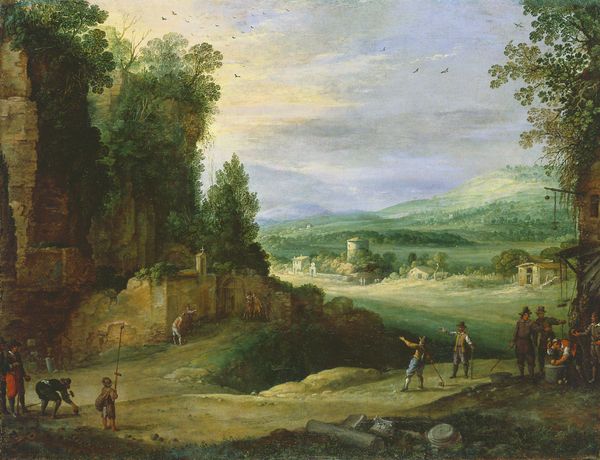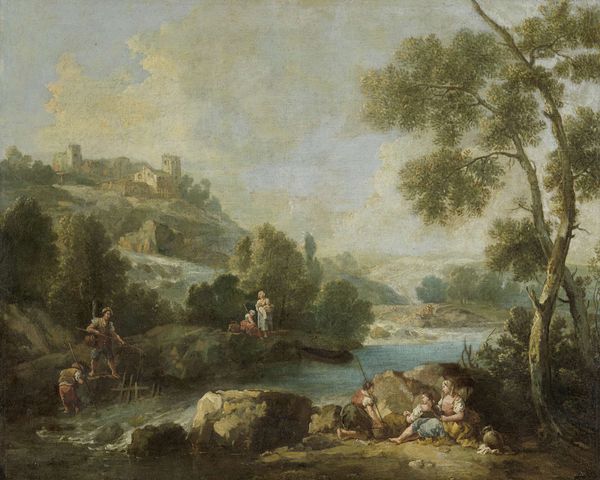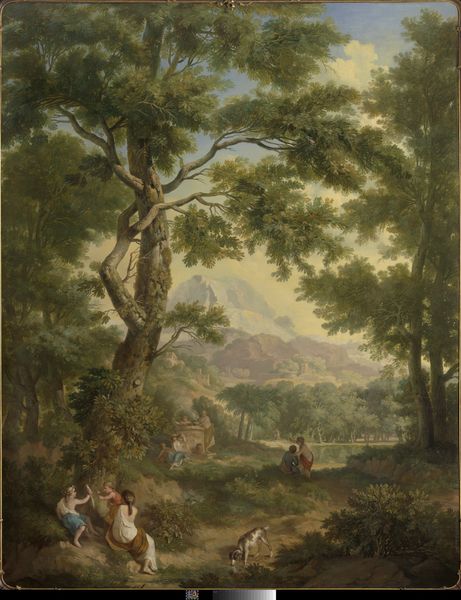
#
figurative
#
charcoal drawing
#
painted
#
possibly oil pastel
#
charcoal art
#
oil painting
#
acrylic on canvas
#
underpainting
#
painting painterly
#
watercolour illustration
#
watercolor
Copyright: Public Domain: Artvee
Editor: Today we're looking at Jan Steen's "The Fortune Teller," painted around 1650 to 1654. There's a slightly chaotic but very engaging quality to the composition. It's like a snapshot of a busy scene. How do you interpret this work, focusing on the formal elements? Curator: The dynamism stems primarily from Steen's manipulation of space and light. Notice how the architecture—the ruined arch and distant tower—establish a structured background. Then consider how he divides the canvas, leading your eye from the main figures with their muted hues, through to the group resting near the right-hand tree. Steen guides you expertly. Editor: So you're saying the setting almost acts as a stage? Curator: Precisely. And within this 'stage,' consider the gestures: the extended hand, the pointing child. Each action, frozen in paint, contributes to the narrative suggested. But look closer; does the muted palette draw your eye more, or less? Editor: I see what you mean; it seems like a contradiction almost! The story is implied but the painterly strokes feel deliberate, preventing complete immersion. Curator: An apt observation. This tension between representation and pure painterly application is quintessential Steen. Consider, how might a contemporary painter use these same formal techniques? Editor: I guess playing with the viewer's expectation makes "The Fortune Teller" truly stand out. It's less about knowing what will happen but about feeling present in the scene. Curator: Indeed. Formal elements create pathways for engagement, guiding and informing our aesthetic experience of the world.
Comments
No comments
Be the first to comment and join the conversation on the ultimate creative platform.
